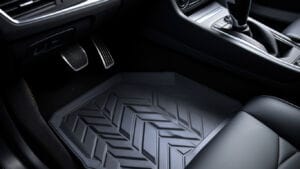When you’re on the road, the last thing you want is to deal with an inconvenient breakdown. Not only are breakdowns frustrating, but they can also result in costly repairs and even dangerous situations. Fortunately, with some proactive maintenance, you can significantly reduce the chances of your vehicle letting you down. Below are essential checks every driver should perform regularly to keep their vehicle running smoothly and safely.
DEEPER DIVE: Read all the Ranking Arizona Top 10 lists here
1. Inspect Your Tires Regularly
Your tires are your vehicle’s direct link to the road, and keeping them in good condition is essential for safe driving.
- Check Tire Pressure: Underinflated tires can lead to reduced fuel efficiency and uneven wear. Overinflated tires, on the other hand, can reduce traction. Use a tire pressure gauge to ensure your tires are inflated to the manufacturer’s recommended levels.
- Monitor Tread Depth: Bald tires are not only dangerous but also illegal in many places. The “penny test” is a quick way to check your tread depth. Insert a penny upside down into the tread groove; if you can see the top of Lincoln’s head, it’s time for a replacement.
- Inspect for Damage: Look for cracks, bulges, or embedded objects like nails. These can lead to sudden blowouts if left unaddressed.
2. Keep Fluids Topped Off
Your vehicle relies on various fluids to function properly. Failing to maintain the right levels can result in mechanical issues.
- Engine Oil: Check your oil level and quality regularly with the dipstick. Dark or sludgy oil indicates it’s time for a change.
- Coolant: Always ensure your coolant levels are adequate to prevent your engine from overheating, especially during long drives.
- Brake Fluid: Low or dirty brake fluid can affect your braking performance. Regularly inspect and top off as warned in your owner’s manual.
- Transmission Fluid: This is crucial for smooth gear shifting. Check it periodically, especially before a long trip.
3. Test Your Battery
A dead battery is a common culprit for roadside breakdowns. To avoid this, inspect your car battery regularly.
- Inspect Terminals: Look for any corrosion on the terminals and clean it with a mixture of baking soda and water if necessary.
- Test Voltage: Use a multimeter to ensure your battery is holding a charge of around 12.6 volts when the engine is off.
- Watch Out for Warning Signs: Dim headlights or difficulty starting your car may signal a weak battery, which should be replaced.
4. Examine Your Brakes
Your brakes are essential for your safety, so keeping them in good working order is non-negotiable.
- Listen for Unusual Noises: Squealing or grinding noises when pressing the brake pedal could indicate worn brake pads or rotors.
- Feel for Vibrations: If you feel a pulsating sensation while braking, get your brake system inspected immediately.
- Check Brake Fluid: Low fluid levels could point to a leak or worn-out brake pads.
5. Conduct a Light Check
Your headlights, brake lights, and turn signals are vital for visibility and communication on the road.
- Test All Lights: Have a friend help you confirm that all lights are working, including high beams and indicators. For solo checks, use reflections off a wall or window to observe their brightness.
- Replace Burnt-Out Bulbs: Always carry spare bulbs and know how to replace them. Burnt-out lights not only increase risks but can also result in fines.
6. Keep Emergency Equipment Handy
Despite taking all preventive measures, breakdowns can still happen. Being prepared can make a huge difference.
- Pack an Emergency Kit: Include essentials such as a flashlight, jumper cables, a first-aid kit, a tire repair kit, and extra water.
- Invest in a Roadside Assistance Plan: Services like AAA can be a lifesaver in emergencies.
- Know Who to Call for Help: If you’re dealing with an accident or an injury on the road, partnering with an injury attorney in Salt Lake City can help you understand your legal options.
7. Follow Regular Maintenance Schedules
Every car manufacturer provides a maintenance schedule in the owner’s manual. Following this schedule is critical to keeping your vehicle running reliably.
- Oil Changes: Don’t wait for warning lights; change the oil as recommended.
- Filter Replacements: Air and fuel filters should be replaced regularly to ensure optimal engine performance.
- Timely Inspections: Visits to a trusted mechanic can uncover potential issues before they become major problems.
8. Don’t Ignore Warning Lights
Modern vehicles are equipped with diagnostic systems that alert you to potential issues via warning lights on your dashboard.
- Check Engine Light: This could indicate anything from a loose gas cap to a serious problem with your engine. Consult a mechanic if the light remains on.
- ABS Light: A steady ABS light signals an issue with your anti-lock braking system, which should be addressed promptly.
Understanding these indicators can prevent minor problems from escalating into costly repairs.
By following these key checks and maintenance tips, you can significantly improve your car’s reliability and safety on the road. Make these habits part of your routine, and enjoy worry-free travels and peace of mind wherever your destination may be.




